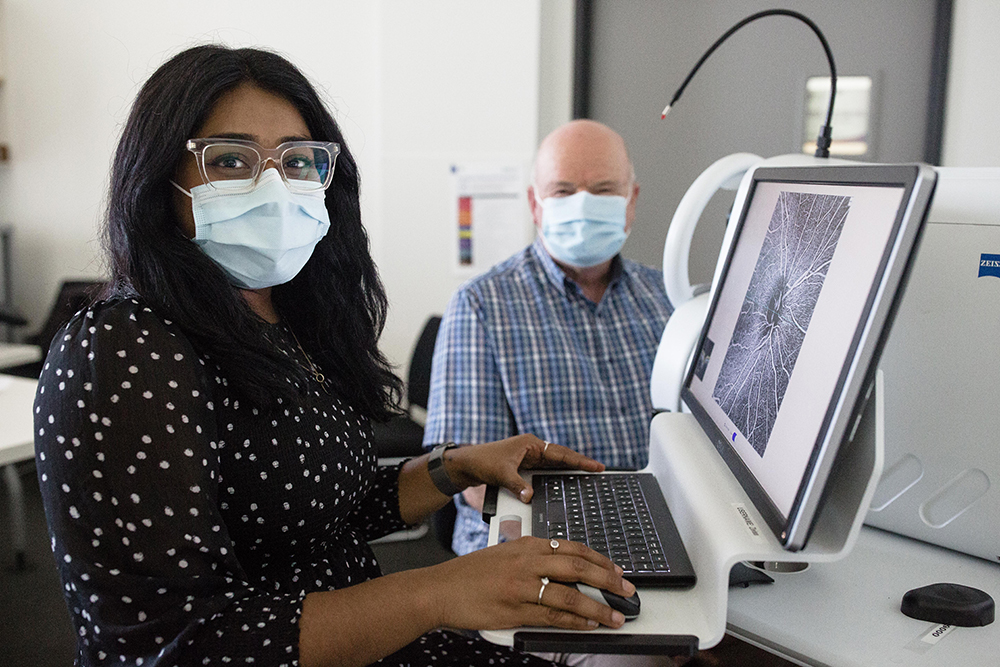This website uses cookies so that we can provide you with the best user experience possible. Cookie information is stored in your browser and performs functions such as recognising you when you return to our website and helping our team to understand which sections of the website you find most interesting and useful.
Stories
Inside an AMD study
For Sandy Kahn, participating in clinical research has led to rewarding experiences and surprising discoveries.
From a young age, Sandy Kahn has always maintained regular eye checks.
It was during one of these visits that his optometrist noticed the early signs of age-related macular degeneration (AMD) and pointed him to CERA for a study run by the Macular Research team.
As a retired paramedic and a keen supporter of health research, Sandy put his hand up to participate.
Sandy’s mother also had AMD, and in her later years it significantly affected her quality of life.
“She could no longer read and engage in many other activities,” he says.
That’s why he’s making sure his own son and daughter also maintain regular eye checks.
Screening process
Sandy admits he went in with a little trepidation when he heard the research involved laser therapy.
But when he arrived at CERA on the day, the macular research team clearly explained the process and quickly allayed any concerns.
“They make you feel very welcome and are appreciative of your involvement in the study,” says Sandy.
“As they explain things, you become even more interested and feel like you’re collaborating with them.”
Sandy says the team first checked whether participants had the appropriate type of AMD for the study.
“There were also basic health assessments, like taking our blood pressure as well as all the normal tests you’d do at an optometrist.”
Laser treatment
Sandy says Professor Robyn Guymer AM performed the laser treatment: “She talked me through every point, so my apprehension went to zero.
“And, of course, it didn’t hurt one little bit.”
A few days later, Sandy received a follow up call from Senior Study Coordinator Lauren Hodgson to confirm everything was okay, before coming back a few months later for his second round of treatment.
“And everything went so well,” he says.

Surprising discovery
As Sandy explains, the AMD study’s thorough screening process resulted in an unexpected improvement to his own quality of life.
“They advised me to visit my GP after tests indicated my night-time oxygenation was dropping significantly.”
After a referral to a sleep physician, Sandy was shocked to be diagnosed with severe sleep apnoea.
“I just thought I was becoming tired, old and grumpy!” he says.
Sandy now has more energy to exercise, resulting in weight loss and improved cardiovascular fitness.
“I’m very thankful to CERA’s Macular Research Unit and hope my small involvement in the study may contribute to further understanding and potential treatments for AMD,” he says.
Register your interest
It’s thanks to the generosity of clinical study participants like Sandy that we’re getting closer to discovering better treatments for eye diseases such as AMD.
If you’re considering taking part in our clinical research, you can learn more and register your interest.

